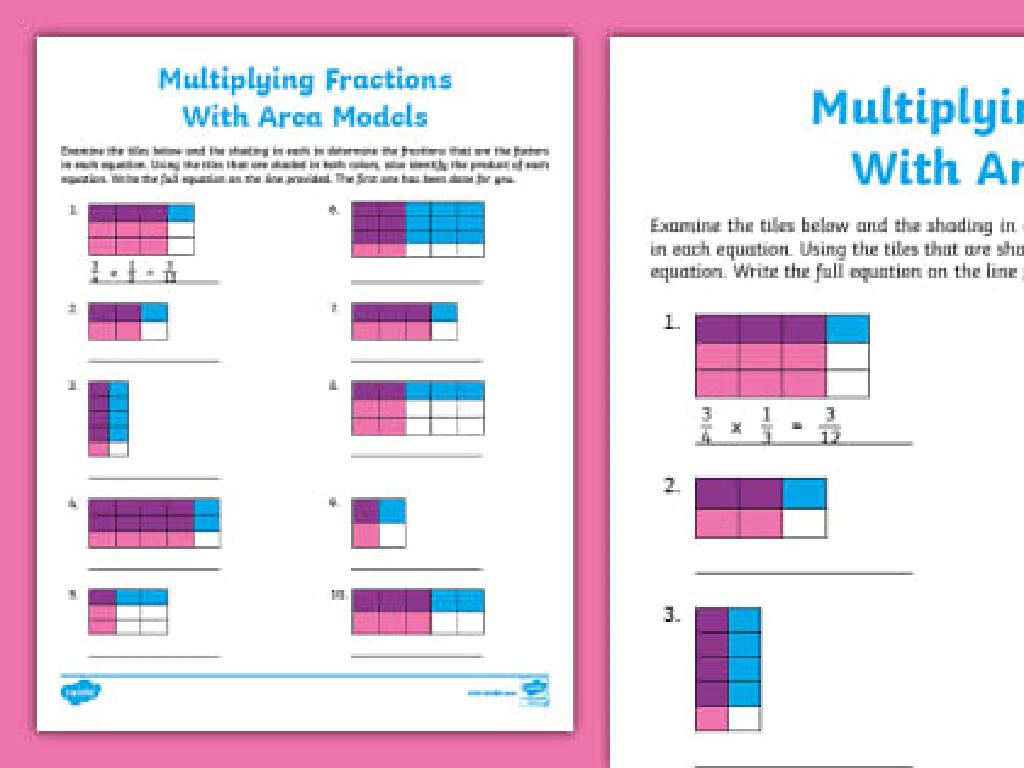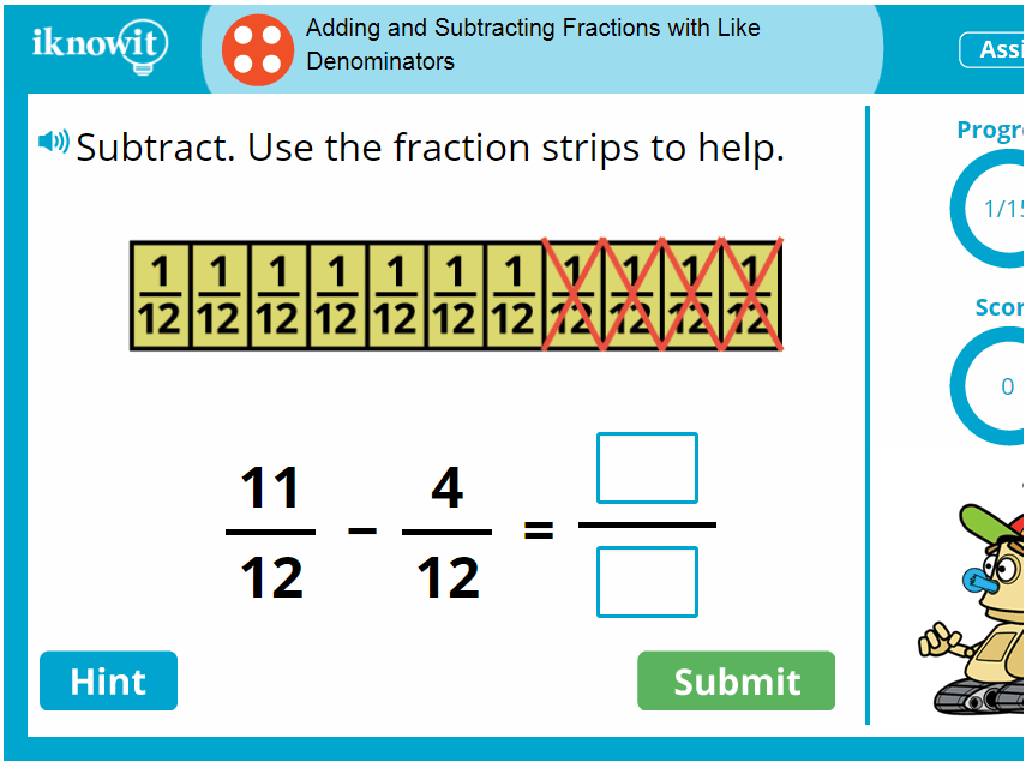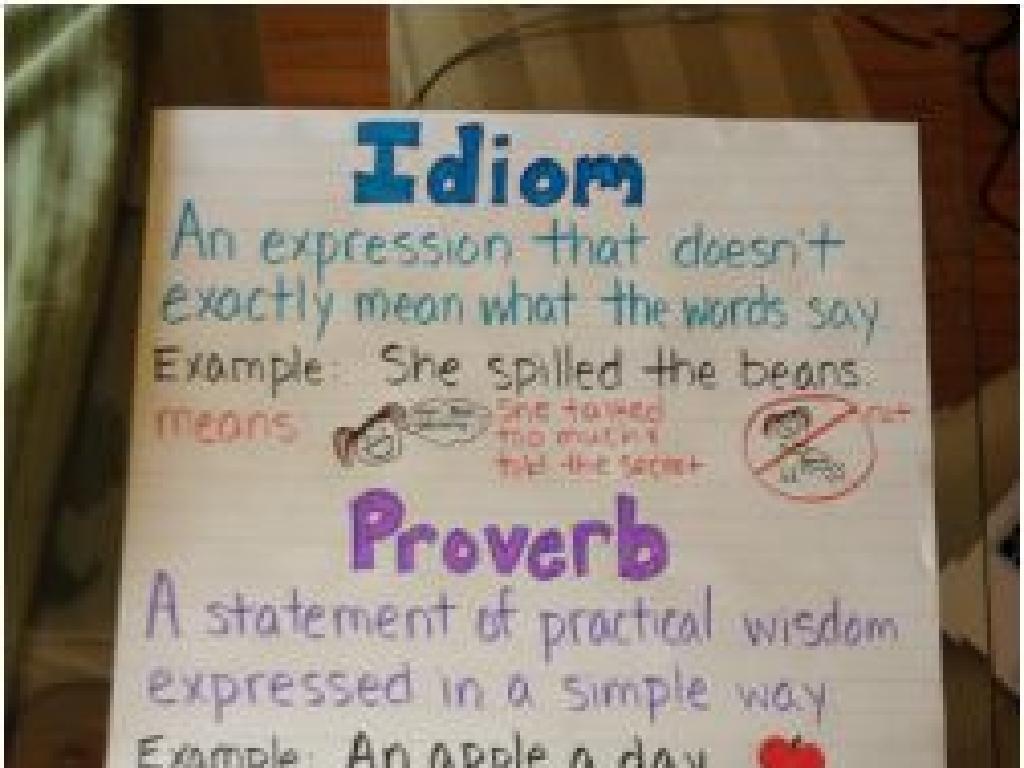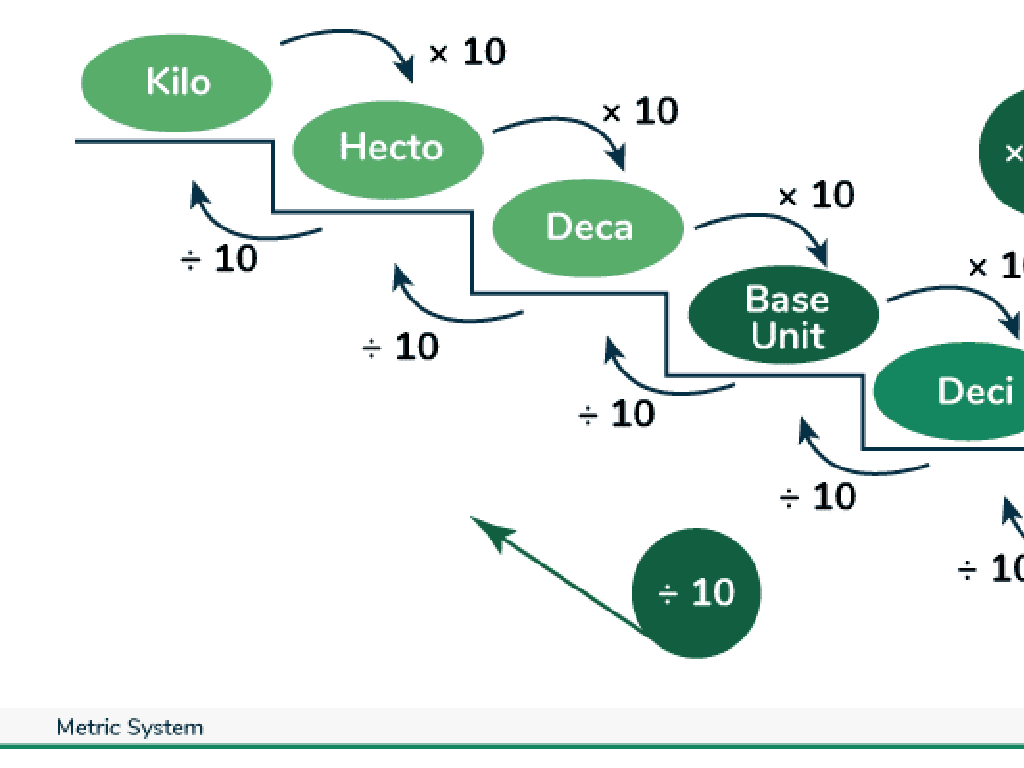Identify Mistakes In Number Patterns
Subject: Math
Grade: Fourth grade
Topic: Patterns And Sequences
Please LOG IN to download the presentation. Access is available to registered users only.
View More Content
Pattern Detectives: Exploring Number Patterns
– Become a pattern detective today
– Discover patterns in math and life
– Patterns exist everywhere: in nature, art, music, and numbers
– Learn what number patterns are
– A sequence of numbers following a specific rule
– Understand pattern significance
– They help predict future events and solve problems
|
In today’s class, we’ll embark on an adventure to become pattern detectives, exploring the fascinating world of number patterns. We’ll start by recognizing the prevalence of patterns in various aspects of life, from the natural world to the arts. Then, we’ll delve into the concept of number patterns, understanding them as sequences that follow a particular rule, such as adding the same number to get to the next term. We’ll discuss why recognizing these patterns is crucial, not just in mathematics but in making predictions and solving real-world problems. Encourage students to think of patterns they encounter daily and to be ready to identify and correct mistakes in number patterns during class activities.
Exploring Number Patterns
– What is a number pattern?
– A sequence following a specific rule, like 2, 4, 6, 8…
– Patterns all around us
– Patterns exist in nature, art, music, and especially in math.
– Counting by 2s, 5s, 10s
– Examples: 2, 4, 6, 8… or 5, 10, 15, 20… or 10, 20, 30, 40…
– Finding the rule in patterns
– Understand how to determine the rule that creates a pattern.
|
Introduce the concept of number patterns by explaining that they are sequences with a specific rule. Highlight how patterns are not just in math but all around us in daily life. Provide simple examples like counting by 2s, 5s, and 10s to illustrate the concept. Encourage students to look for and describe patterns they notice in and out of class. Discuss how to find the rule of a pattern by looking at the changes between numbers. This foundational understanding will help them identify mistakes in number patterns in future lessons.
Rules of Number Patterns
– Number patterns follow rules
– Like a secret code to figure out the next number!
– Rules can be math operations
– Addition, subtraction, multiplication, or division
– Examples help us find rules
– Let’s look at patterns to see how they work
– Practice identifying the rule
|
This slide introduces the concept that number patterns follow specific rules, which are often basic math operations. Start by explaining that a pattern is a sequence of numbers that are linked by a rule. It’s like a puzzle where you have to find the secret code to discover the next number. Show examples of simple patterns and work through them with the class to identify the rule governing each one. For instance, in the pattern 2, 4, 6, 8, the rule is ‘add 2’. Encourage the students to practice with different patterns to become comfortable with identifying the rule. This will help them not only in recognizing patterns but also in predicting future numbers in the sequence.
Spotting Errors in Number Patterns
– Patterns may have errors
– An error is a rule-breaking number
– If a pattern adds 2 each time, 2, 4, 7, 8 is wrong because 7 doesn’t fit
– Practice finding and fixing mistakes
– We’ll look at examples together in class
– Understanding pattern rules is key
– Knowing the rule helps find what doesn’t belong
|
This slide introduces the concept of identifying errors within number patterns. Emphasize to students that patterns follow specific rules, and when a number does not align with the established rule, it is considered a mistake. Encourage students to look for consistency in the sequence of numbers to spot the error. Provide practice examples where students can apply this concept, such as finding a number that doesn’t fit in a pattern of adding 2. Reinforce the importance of understanding the rule of the pattern to effectively identify mistakes. During the lesson, work through several examples as a class and discuss the reasoning behind each error identified.
Let’s Practice Together: Spotting Pattern Mistakes
– Observe the given number pattern
– Think about the pattern’s rule
– What’s the sequence? Adding, subtracting, multiplying?
– Apply the rule to each number
– Check if each step follows the rule correctly
– Raise your hand if you find a mistake
|
This interactive class activity is designed to engage students in identifying errors within number patterns. Display a sequence of numbers on the board and walk through the first few with the class to establish the pattern’s rule. Encourage the students to apply this rule to subsequent numbers independently. When a student spots an error, they should raise their hand and explain the mistake. This exercise will help reinforce their understanding of number patterns and sequences. Possible activities could include patterns with addition, subtraction, or simple multiplication to cater to different levels of understanding within the class.
Group Activity: Crafting & Analyzing Number Patterns
– Create a number pattern with a rule
– Exchange patterns with another group
– Spot and note any mistakes
Look for breaks in the pattern’s rule
– Class discussion on patterns and errors
|
This group activity is designed to encourage collaboration and critical thinking among students as they create and analyze number patterns. Each group should decide on a rule for their pattern (e.g., add 3 to each number) and create a sequence based on that rule. After exchanging their patterns with another group, students will apply their understanding of number patterns to identify any discrepancies. Conclude the activity with a class discussion, allowing students to explain their patterns, the rules they applied, and the mistakes they found. This will reinforce their understanding of sequences and the importance of a consistent rule in patterns. Possible activities for different groups could include creating patterns with different operations (addition, subtraction, multiplication) or incorporating real-life examples like counting by days or money saved each week.
Class Activity: Pattern Detective Game
– Become a pattern detective
– Spot mistakes on the board
– Look for numbers that don’t follow the rule
– Earn points for correct finds
– Work together as a team
– Teamwork is key, discuss with your team
|
This interactive game is designed to engage students in identifying errors within number patterns. Divide the class into small teams and present a series of number patterns on the board, some of which contain deliberate mistakes. Encourage students to analyze the sequences and find the inconsistencies as quickly as possible. Award points to the team of the first ‘detective’ to correctly identify a mistake. This activity fosters critical thinking, attention to detail, and cooperative learning. Possible variations of the game could include patterns with addition, subtraction, or multiplication rules, or patterns that skip numbers. Ensure that the patterns are appropriate for the fourth-grade level and that the rules are clearly explained before starting the game.
Conclusion & Homework: Number Pattern Detectives
– Congrats on becoming pattern detectives!
– Complete the pattern worksheet for homework
– Find and fix any mistakes in the sequences provided
– Practice is key to mastering patterns
– Observe patterns in daily life
– Numbers, rhythms, routines – they all have patterns
|
Well done to the class for learning how to identify mistakes in number patterns! The homework assignment involves a worksheet that will reinforce today’s lesson by providing a variety of number pattern exercises. Encourage the students to complete the worksheet carefully and check their work for errors. Remind them that the more they practice, the better they will become at spotting patterns, not just in math but in the world around them. Share examples of patterns they might observe outside of school, such as in nature, music, or even in their daily routines, to help them relate to the concept.





